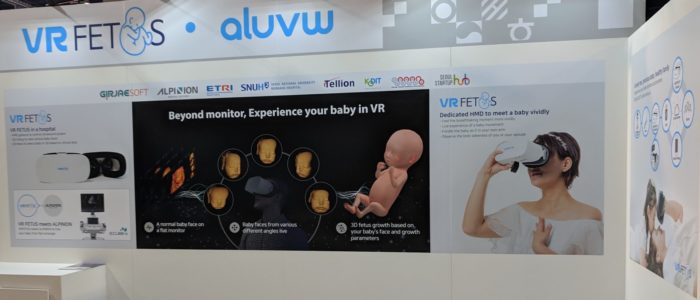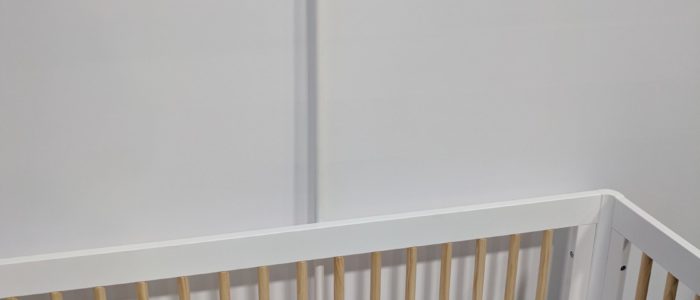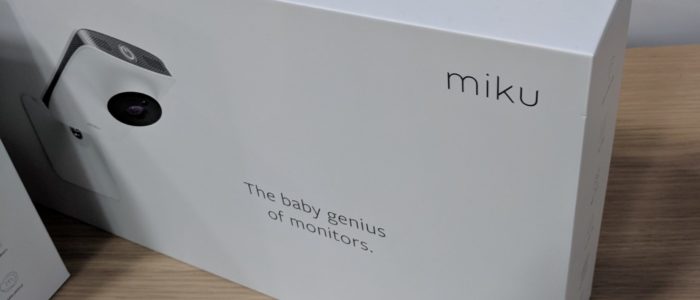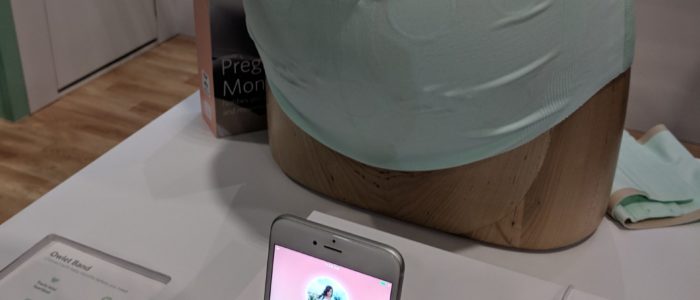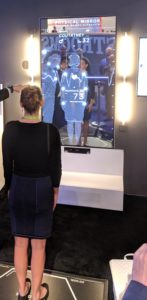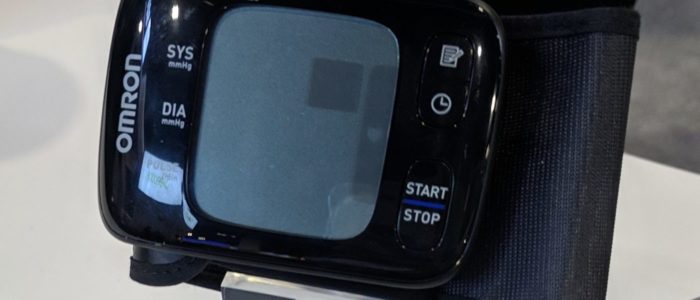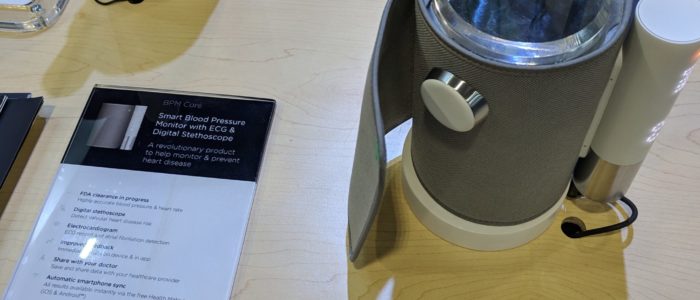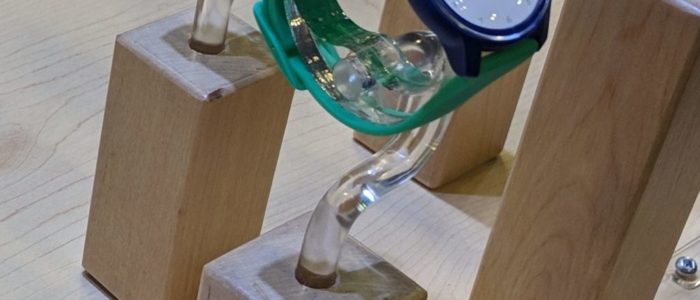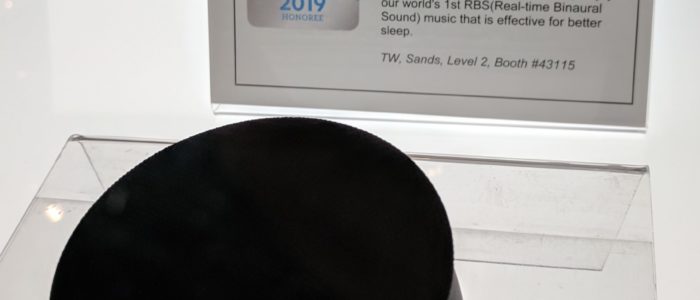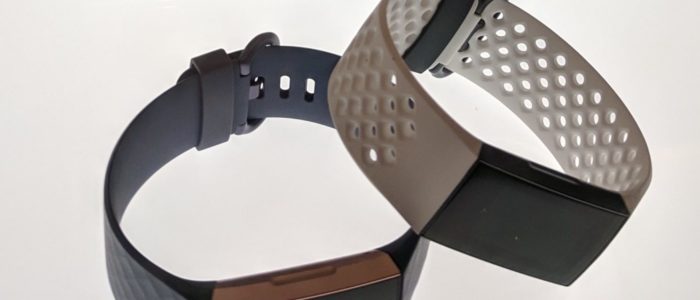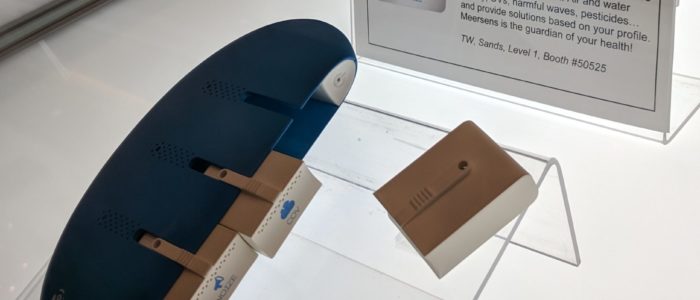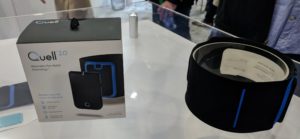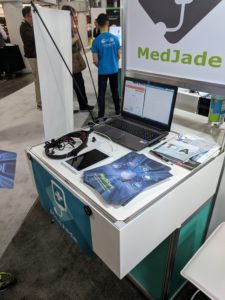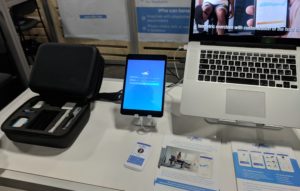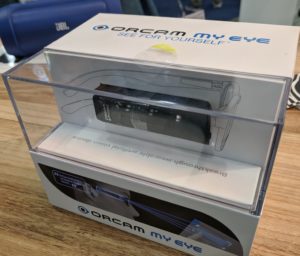CES 2019 Medical/Health Technology
Medical and Health Tech has exploded over the last 3 years. This year we are starting to see serious medical applications like clinical grade ECG and EEG analysis as well as surgical simulation systems in the larger venues like the Sands Convention Center.
MedVR
MedVR started off the conference in a big way for me. Located in the LVCC South venue, MedVR offers a surgical simulation VR environment for practicing procedures with devices and includes haptic feedback.
A fairly early prototype, this company is a technology startup from Russia. This was obviously a prototype, but you can see on the screen that it was actually working. As this guy moved the devices you could see what he was doing. I could tell from his reaction that he was getting feedback when he moved the devices.
It is encouraging to start seeing useful applications of VR technology.
Baby & Mom Tech
There are a ton of baby related products, I picked out 4 in the following gallery that I thought were pretty interesting.
I can definitely see the Owlet Band as being a hit especially with first time parents, but at the same time I cannot imagine a mother wearing it all the time. Few hours a day or something like that would be likely.
Sensors and Wearables
There is continuing growth in wearables, however this year you can see even mainstream companies are starting to include functions with real clinical usefulness and accuracy. ECG is the main sensor being added.
Lumen
This device looks very interesting if it truly works. This is a sensor that you breathe into throughout the day and it guides your decisions on meal and snacks based on the analysis of your breath and computing this into the carb/caloric load you have had within the last 36 hours or so. It then recommends what to eat based on that. Pretty interesting, if it really works.
Panasonic Health
Some pretty impressive in-home technology from Panasonic was on display. Scales, chairs and other home goods with integrated multi-sensor technology. The scale in the picture is monitoring a number of things obviously starting with weight.
Sex, age and heart rate are included in the analysis. I’m not sure quite how it does the gender part of that, but there are little cameras just below the mirror so I bet they are part of that analysis.
Panasonic also had on display a chair with sensors built into it that measures your emotional state: heart rate, seat pressure, “odor”, facial expression (via a camera), etc. to compute a stress/relaxation or “emotion” score.
Even thought there was a person in a medical smock, I’m not sure what can really be done with this kind of thing or if it is clinically accurate. I guess a good test might be during sports game viewing at home when your team wins/loses.
A variety of other sensors and wearables were there, I’ve created a captioned gallery with the rest of that I thought were interesting:
Waggit – Health for your Dog
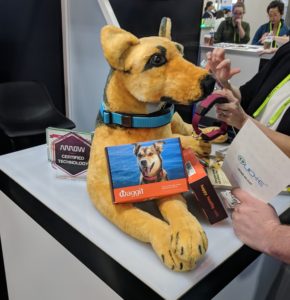
Whether its a GSP locator, or in this case a health wearable, the trend in animal/pet care solutions at CES continues. Waggit tracks heart rate, respiration, body movements, and a few other things in an attempt to warn you of a change in the dog’s health. In addition it includes location services.
Set activity goals and track your dog’s time, distance, speed, intensity and calories burned vs. similar dogs, and see Fido shine on the Waggit app leaderboard – lol! There’s a virtual fence that you can define and if the dog goes outside that you. receive an alert.
Fat Cats – the end is Near!
Ah yes – so continuing with pets, from Eureka Park comes the cat wheel for exercising your cat. No kidding. Now the question I have is how do you get the cat to want to do this.
I could see it going one time, but after that I would think most fat cats would not venture anywhere near the crazy wheel that keeps spinning around.
They did have a video of a cat running on this for quite a while so I guess you never know.
In serious medical applications there were a bunch of very interesting things. 5 years ago there were no serious medical solutions at CES so this growing presence is very interesting. It really points to how technology is becoming integrated into all aspects of our lives, including healthcare.
Brain Robotics Smart Hand
A Harvard Innovation sponsored startup, Brain Robotics is developing a prosthetic hand that is controlled by sensing micro-muscle movements above the wrist via a sock worn on the upper arm. Extremely cool technology and I sure hope it becomes available to our veterans that need it.
Quell 2.0
Quell has been around for a couple of years. It is a device that is worn on the upper calf muscle. Quell sends electrical pulses thru your body that masks the pain nerves that run up and communicate with your brain. It does not actually help the pain go away, but the relief from pain is a significant factor for an improved life. I know several people that use this device and say it works. The new version is smaller, slimmer, and comes with much better connectivity and control from a mobile app.
MedJade MagXCure
MagXCure is a software analysis package that integrates with EEG systems to provide enhanced data analysis of data streams from these devices. Extremely useful in analysis of hours of EEG patients with Epilepsy for example. The software can comb thru hours of data in minutes and produce accurate pattern analysis, where it takes a neurologist many hours to do the same task, usually with a higher error rate.
Is also applicable to supporting uses of TMS therapy for various conditions: stroke, multiple sclerosis, amyotrophic lateral sclerosis, movement disorders, and motor neuron diseases.
Re.Flex Post Knee Surgery Exercise
This band with gyro sensors is used in combination with a mobile app to recover from various kinds of knees surgeries like ACL repair or even TKR (total knee replacement). The sensors are used to produce an animation overlaying your legs motion with the desired motion on the app. So that you can be sure you are doing the exercises correctly. Hundreds of exercises are included and you can work with your doctor to setup the right routines. Your doctor can also review how you are doing.
This is also fairly low cost. The idea is the clinic owns the device and “rents it” to the patient for 6 months post surgery and then the patient returns it.
ORCAM
This optical recognition camera was one of my top picks at CES 2018. It is back with improvements to the software, a higher resolution camera (13 megapels), and a new device meant for regular people “MyMe”. The original device is worn on a pair of glasses and is meant for a visually impaired person. The camera recognizes things or reads and “whispers” into the user’s ear. Its really quite amazing. There are two versions now, the original with face recognition and one without face recognition that is cheaper.
MyMe is clipped to your shirt and it compiles the things you do and people you see into a “network” or screens in an app – its a Kickstarter project.
Phonak Virto B-Titanium Hearing Aid
Finally, the best is last. Titanium 3D printed hearing aids! Wow! Extremely small, so that they need that little string so you can pull them out.
Available in multiple strengths. A control button allows the user to adjust the volume as needed.
They are not custom printed to the individual’s ear canal.


